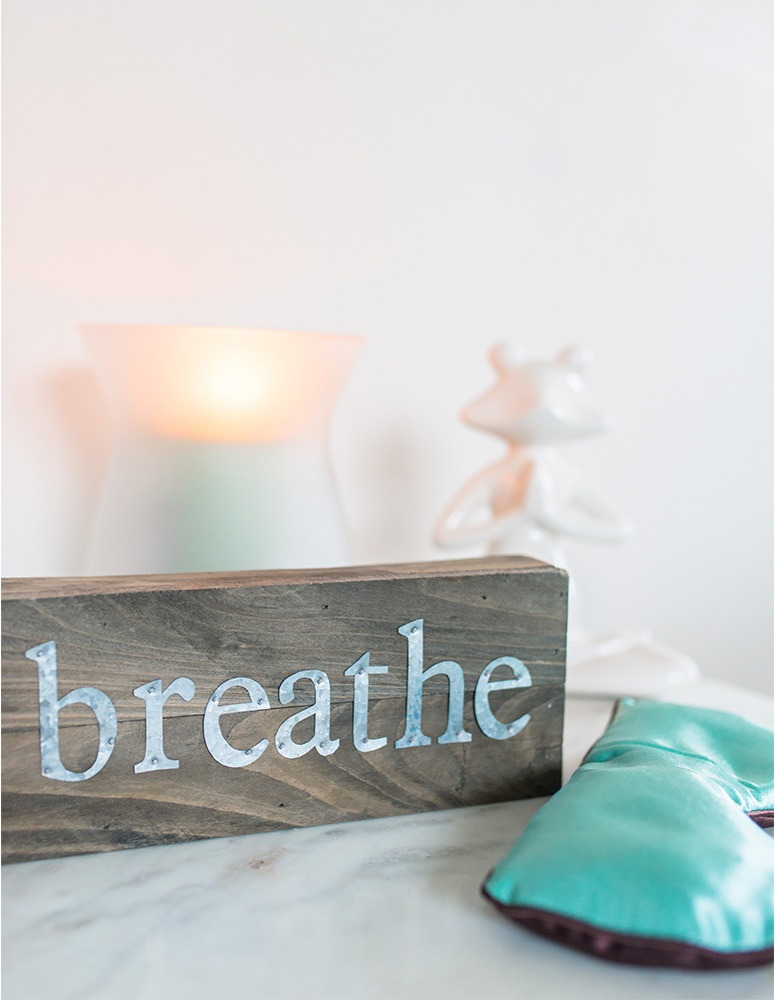Why It’s Time to Consider Breath Training
One of the most powerful and effective ways to manage stress is right at the end of your nose. It’s your breath—which not only oxygenates your blood and tissues, it also signals your body as to your emotional state and physical circumstances, indicating whether it’s time to “rest and digest” or “fight, fly, or freeze.”
Yogic breathing—long, slow breaths through the nose—have long been known to calm the central nervous system and promote the “rest and digest” functions of the parasympathetic nervous system. However, did you know that different types of breathing are better for different circumstances? Or that most of us are “improper” breathers? Or that you can train yourself to breathe better for improved health, performance, longevity, and stress management?
In this guest post, Kelli Gardener (aka Rebecca Moses), a healthy lifestyle blogger for www.GroomandStyle.com, walks us through the hows and whys of optimal breathing for different conditions and circumstances. Her post is excerpted from a more comprehensive manual she wrote on the subject: Breathing Techniques: A Guide to the Science and Methods.
“Breathing is part of our body’s master blueprint for regulating the body’s rhythms,” Gardiner says. “Yet many of us don’t become aware of our breath until we exercise. We might find ourselves winded after running up a slope, or we might be asked during a yoga session to pay attention to our breathing for the first time that day.
“One of the biggest contradictions in our body is the question of why we get winded. If our muscles are able to do the tasks we ask of them, why can’t our breath?
“The answer is that our breathing cycles need specific training as well. Training our breath can enrich our lives in nearly everything we do, whether it’s exercising, socializing or something as seemingly simple as sleeping at night.”
Gardiner identifies six different types of breathing, each of which might be indicated for a different type of activity or set of circumstances. All of them, however, have two traits in common: breathing through the nose, rather than the mouth; and breathing from the diaphragm, rather than from the chest.
The 365 Breathing Method utilizes slow, steady diaphragmatic breathing to stimulate the vagus nerve, which triggers the parasympathetic nervous system’s relaxation response. This technique is indicated for managing chronic stress, anxiety, pain, phobias, nicotine withdrawal, and trauma therapy. It consists of five-second inhalations, followed by five-second exhalations practiced for five minutes daily at least three times per day. The idea is to breathe at a constant rhythm of six cycles per minute for five minutes.
The 4-7-8 Breathing Exercise is recommended for relaxation, better sleep, managing cravings, and reducing anger responses. It involves sitting straight, relaxing the tip of your tongue against the back of the front teeth, breathing in through the nose for a count of four; holding the breath for seven counts; exhaling through the mouth for eight counts, making a whooshing sound through the mouth as you exhale. This cycle is repeated four times.
Ayurvedic and Pranayama Breathing Techniques vary (and Gardiner describes several), but all include four primary skills:
- Nose breathing.
- Focus, in particular, the ability to focus exclusively on the breath.
- Breathing through the diaphragm.
- Strengthening the diaphragm to allow for more effective, connected, and efficient breathing.
Box Breathing, developed by retired Navy SEAL Commander Mark Divine, to aid slow, calm deliberation and respiratory strengthening, is also useful for quitting smoking and developing respiratory strength. To Box Breathe, inhale for a five-second count; hold the breath for another five seconds; exhale for five seconds; hold the breath from another five-second count before inhaling. Box breathing should be repeated for one to three minutes several times a day, or when the practitioner is feeling nervous or anxious. Individuals can work up to five to ten minutes of box breathing a day.
Buteyko Breathing Methods were developed by Russian medical scientist Dr. Konstantin Buteyko as a treatment for asthma, the method works to reverse the health problems that come with improper breathing, over-breathing, and mouth breathing.
Qi Breathing is a meditative, deep breathing technique developed from Chinese medicine and martial arts and, by incorporating a stated intention, is designed for improving quality of life through increased motivation, health, and energy. To begin practicing Qi breathing:
- State your intention for your breathing session. For example, you might want to find energy and motivation, or you might want focus and relaxation.
- Inhale and exhale deeply and quickly through the nose in one-second bursts. Imagine your breath moving in a circle through your body, as it flows up the back of the spine and then down the front.
- Incorporate a rocking movement with the breathing by rocking forward to your knees on the exhalation and the backward on the inhalation. Focus primarily on the inhalation and the ability to draw in energy.
- Maintain your focus in your breath and keep a quiet mind.
Shorter Qi breathing sessions can last for three minutes, but longer meditative Qi breathing sessions can last up to 30 minutes.
“Attentive breathing is one way we can signal the body to respond appropriately to current conditions,” Gardiner says. “With the speed and depth of our breath, we are telling our bodies what we are feeling, as well as what our priorities are at the time. That’s because breathing affects all the aspects and levels of our mood, from stress level to blood pressure and immune functionality.
“Due to the record levels of Cultural Stress people experience throughout the developed world, many individuals aren’t living their healthiest lives, even when they work hard at dieting, exercising, and achieving a work/life balance. Attentive breath training—and incorporating attentive breathing into your daily routine—can yield benefits in all areas of your life,” she says.
